The Tree House – Monkeys
There are three types of monkeys that we are currently caring for, these are Bonnet Macaque, Rhesus Macaque and Langurs.
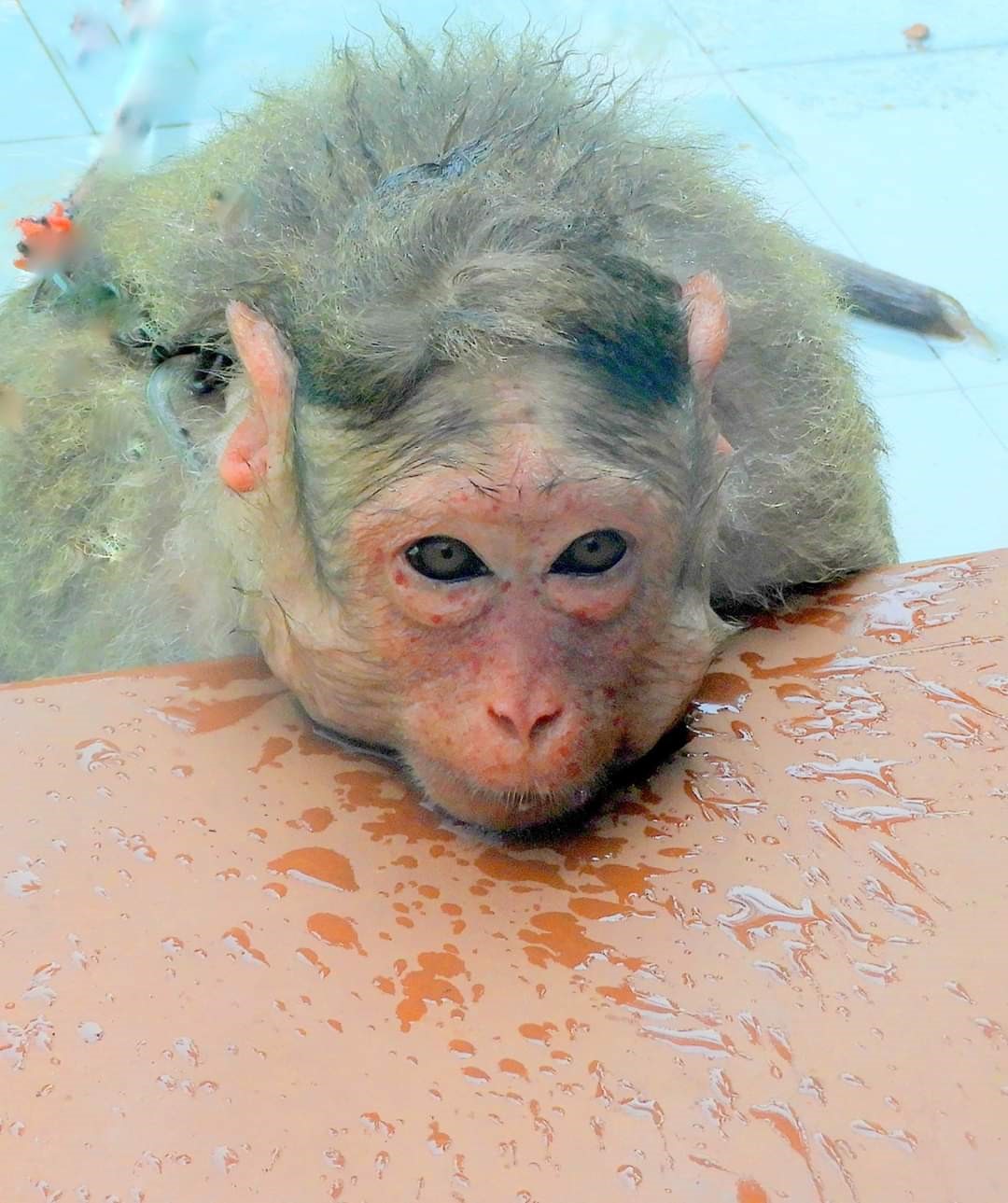
Sweetie
Sweetie had been kept as a captive pet since a baby, when she lost her arm in an accident. Although she has always been well looked after, first by her original rescuer and then by kind animal people, she had never had the opportunity to meet and associate with any other monkey, or even have

Pixie
Pixie, This now Large Langur was rescued by one of IAR’s ambulances and taken to the centre at Assagao when they received a message to say a female Langur Monkey had been killed on a busy road , and its baby was still alive, clinging to its mother’s dead body. We were later informed that

Sasha
Type : Bonnet MacaqueSex : FemaleAge : Approx. 2 Years old on arrivalDate of Arrival : 29th January 2009 Before coming here, Sasha was being kept as a pet in a restaurant in Candolim. When she first arrived here she was around 2 years old and was terrified of all the other monkeys as she

Koko
Another little orphan, to join Finn and Elette. Luckily we had a competent and enthusiastic full time volunteer here for one month at that time to help, so Pryianka, was able and willing to take on Kokos 24 hour early care ! This meant many sleepless nights for her,as he proved to be a very

Nissa
Nissa was brought in as a small baby with her mother after they were rescued following being hit on the road. Her mother sadly could not be saved as her injuries were too severe. Nissa was therefore bottle reared by our volunteers, Alexandro and Celine who spent the monsoon in charge of the tree house

Lily
Bought in to us by the forestry dept at about 4 months old, she had many injuries including burns to hands and feet. It is thought she was partially electrocuted on power cables. She has now made a full recovery from her injuries, and with the help of Christelle ,who was brought in during the

Katrina
Katrina is a Rhesus macaque, not a species native to southern India. They only arrive here as illegally imported babies, to be sold as pets. Katrina had been kept for 16 years on a Hindu shrine in a cage measuring less than 1mtr square. Somehow she escaped and the terrified keepers were unable to handle

Kirsty
Kirsty was handed over to us by the Forestry Department, who found her wandering around Panaji, where she was either abandoned or escaped from being kept as a pet. When she first arrived at the Tree House she was very nervous of humans but was very interested in the other monkeys and keen to get

Kia
Date of Arrival : 15th November 2013 Found in Bombay loose but with a dangling chain, she is probably an escaped monkey that was used for begging. She is used to being handled by people and we are already able to walk her in the garden. She was bought to us from Bombay by the

Ruby
Ruby, a female Bonnet Macaque Monkey was rescued from her handlers when we were alerted by supporters that they were beating her with a stick and trying to cut off her tail, as a punishment as she had bitten one of them. She was being used on the beaches for begging. Because of what she
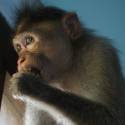
Lavender
Lavender is an escaped or released pet. She found her way into a big office complex and John was called to rescue her. She was successfully caught and bought to the tree house. Although thrilled to meet other monkeys at present she is still, quite naturally, wary of humans. She would have been kept on

Dennis
Dennis was brought into us as a tiny baby. He had been confiscated by the forestry department as an illegally kept pet. He would have been bought to be used for begging from tourists. His mother would have been killed, in order for a baby of this age to be separated from her. He was
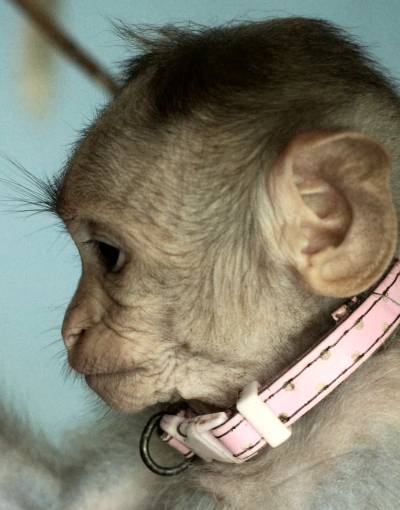
Dixie
Dixie was being used in a nearby tourist town for making money by using her to pose with tourists. Although she was screaming in fear while being manipulated for the posed photos, none of the tourists using her in this way seemed to understand, or care, what she was going through. She was about 2-3
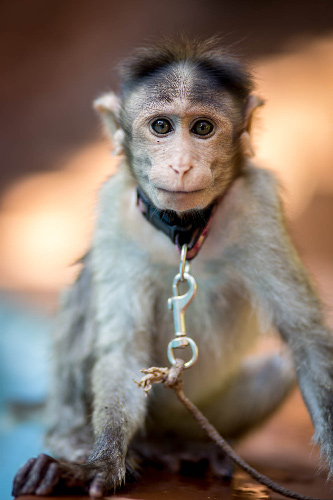
Kochi
A call for help was received, concerning a baby monkey that was being attacked by a monkey troop. This was some distance away, and by the time we arrived on the scene, the baby had taken shelter in a crowded drinking bar. He was quickly caught and it was immediately obvious that he was, or

Percy
Before Percy arrived he was being dragged round the streets and used for begging. A member of the IAR staff spotted him at Margao bus station and immediately called the police for assistance. The police, at John’s insistence, confiscated him and handed him over to us. As is all too common, poor Percy had many

Manuel
Manuel was kept at a beach shack in Mandrem in North Goa to try and attract more tourists. One of these tourists informed the center and John, along with a member of IAR staff, went immediately to the shack to confiscate him. The owner at first refused to hand him over but John showed his

Grasshopper
Another of the 2005-6 beach babies. Grasshopper was the most nervous and smallest of this group and was initially teamed up with Snatch, who took big brother care of him as a baby. Grasshopper would run to Snatch if he was being bullied. As he matured he tried to take on Snatch for head of
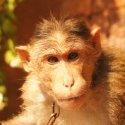
Baldrick
Baldrick was brought into the IAR center in Assagao for treatment by two small boys who claimed they were just looking after him for a friend. He had been badly savaged by their dog and he had many deep puncture wounds all over his back and neck. One of his shoulders was also broken. He

Tufty
Tufty was brought in to the IAR center by motorbike, in Assagao by someone who claimed to have just found him, but who was clearly his owner. He was suffering from multiple severe injuries that were consistent with being dragged along the road. It seemed obvious that he had fallen off the back of his

Preston
He was being kept as a pet and restaurant attraction. Confiscating him from his situation proved very traumatic even though it is totally illegal to keep any wildlife in India. (John had special recognition from the Animal Welfare Board of India, The Central Zoo Authority and the Department of Environment and Forests). The owners of

